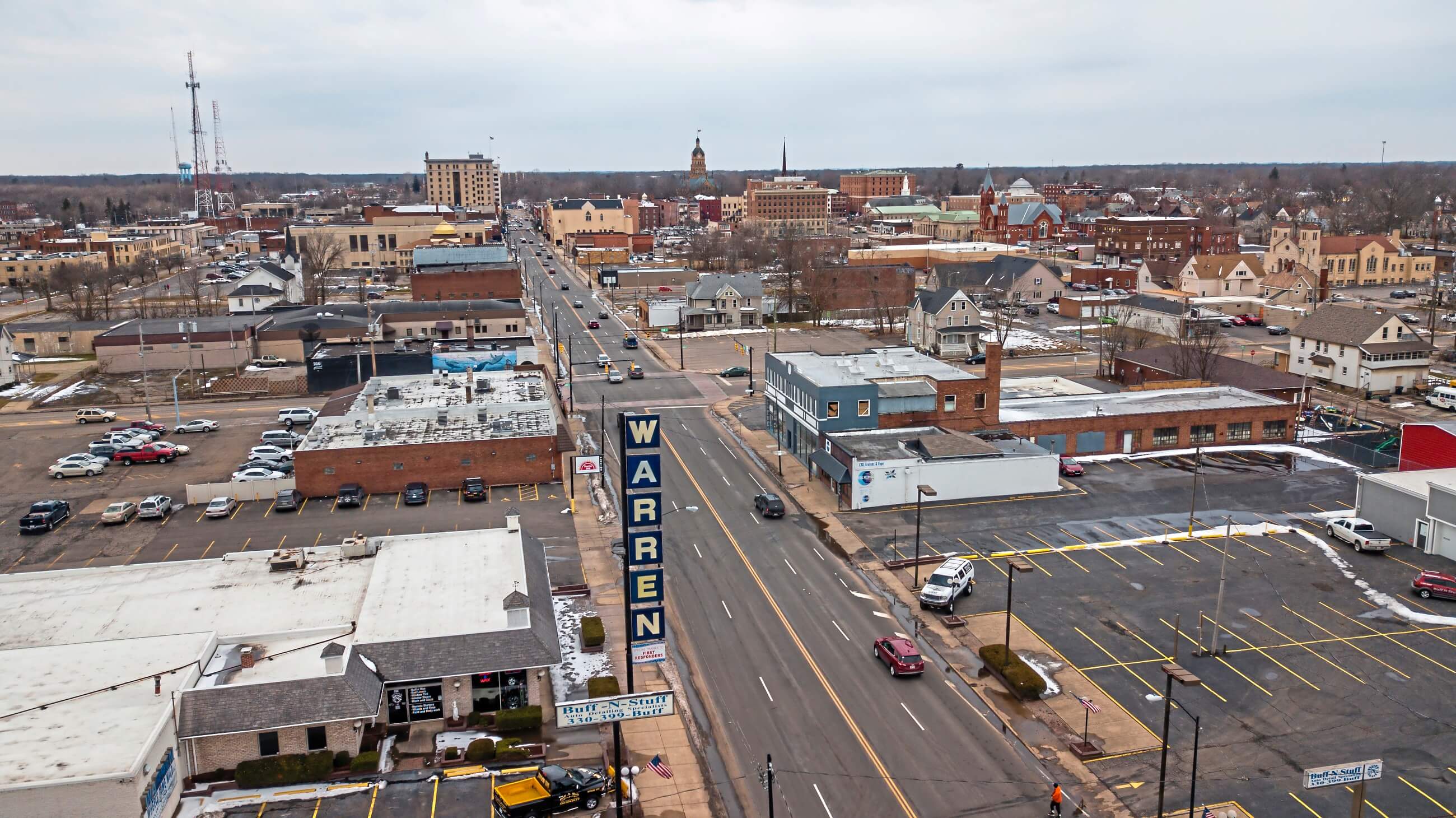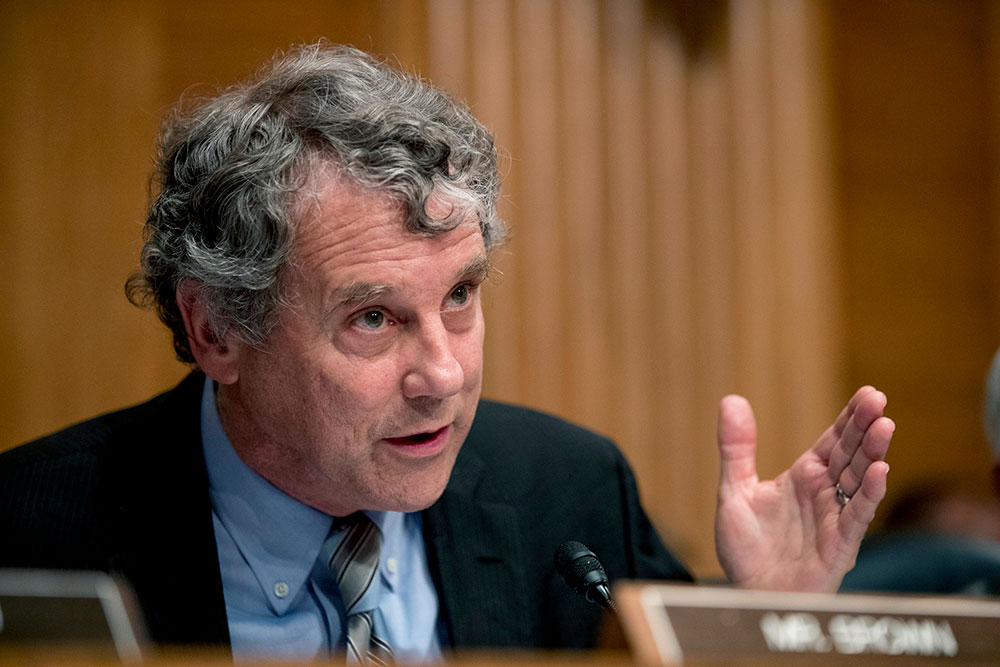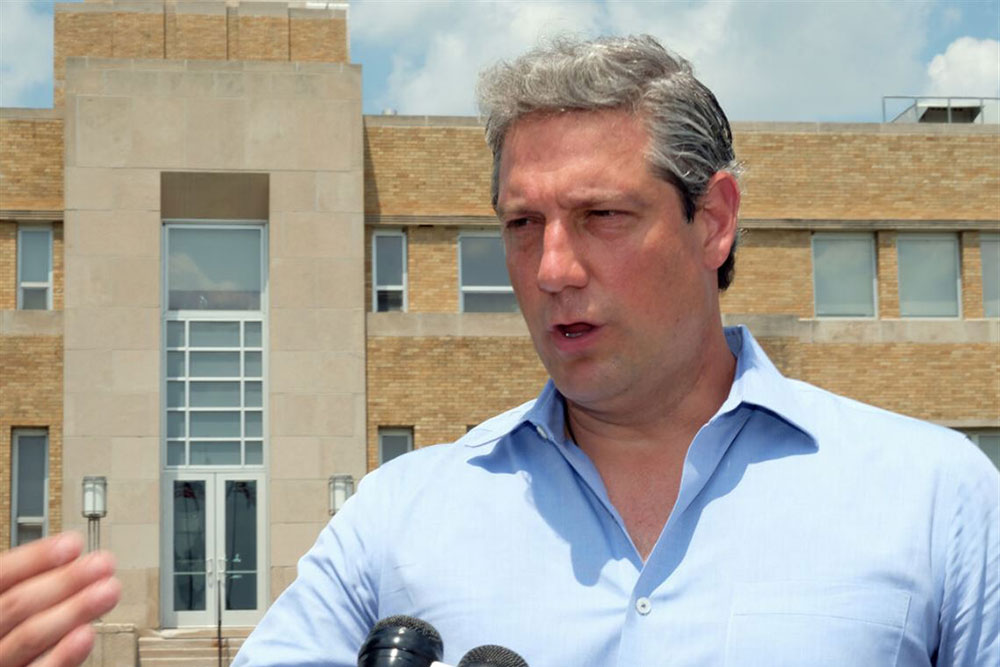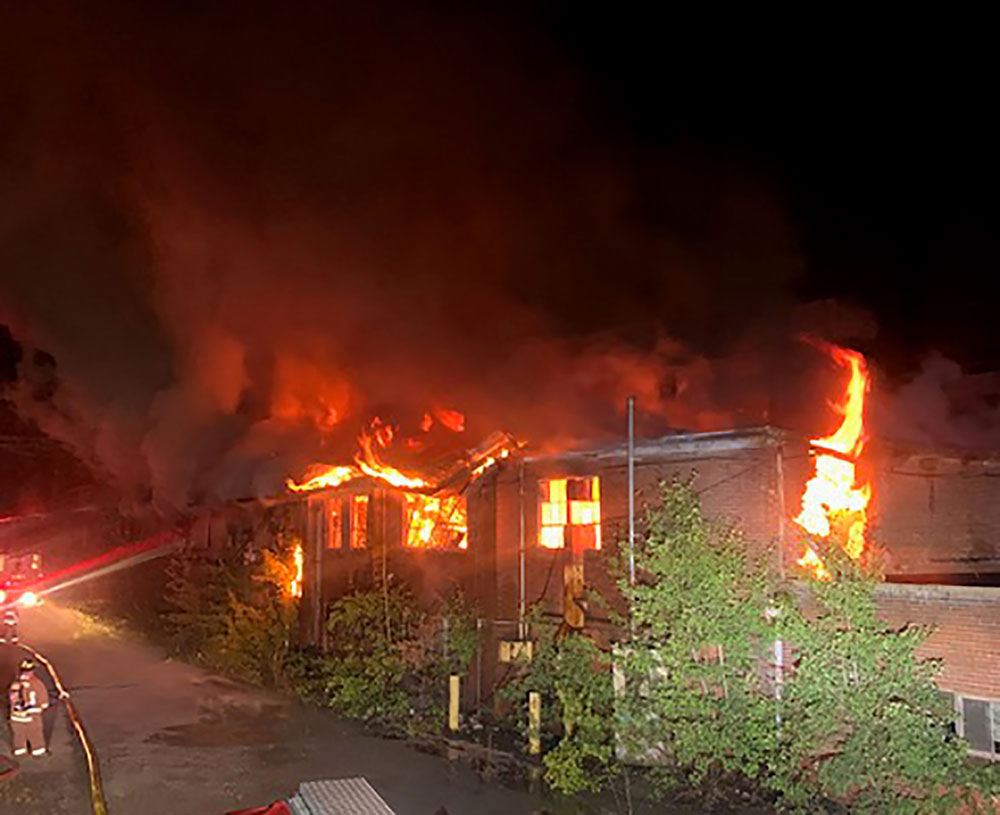Accused money launderers secretly moved millions into America to buy steel mills — while elected leaders helped them fend off U.S. regulators and foreign competitors. Left in the wake: hazardous waste and injured workers.
By Michael Sallah and Emma Loop | Pittsburgh Post-Gazette
November 19, 2021
Just after dawn, the fumes rose from the top of the Felman Production metals factory where the arc furnace belched out smoke and dust that cascaded over the neighborhood, covering the homes in a layer of filth.
Inside, Terry Henry, a 42-year-old welder, started to shake and later began to stumble and come down with excruciating headaches.
What he didn't know at the time was he was slowly filling up with toxins so dangerous from the furnace fumes pouring into the factory that doctors later found traces of manganese in the base of his brain.
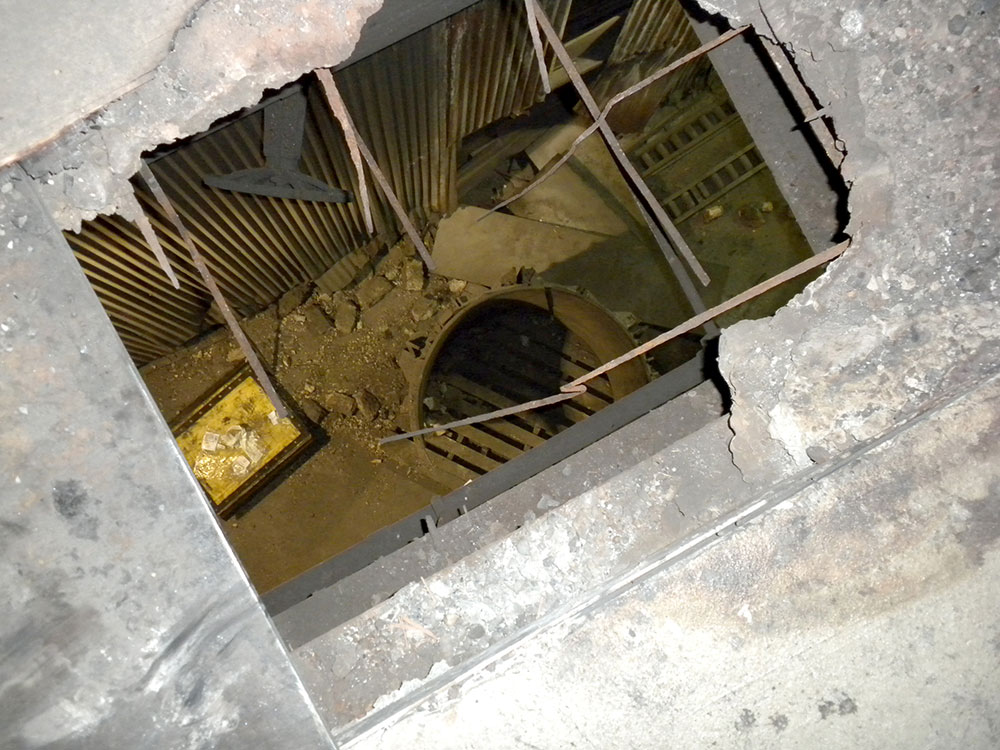
Plant engineer Richard Richmond suffered severe injuries after he fell through this hole in a badly damaged upper floor at Felman Production in 2010.
When the U.S. Environmental Protection Agency stepped in years later to push tough restrictions on the factory — after workers were found to have been exposed to emissions — the operators of the West Virginia facility turned to some of the most powerful members of Congress to fend off regulators and keep the doors open.
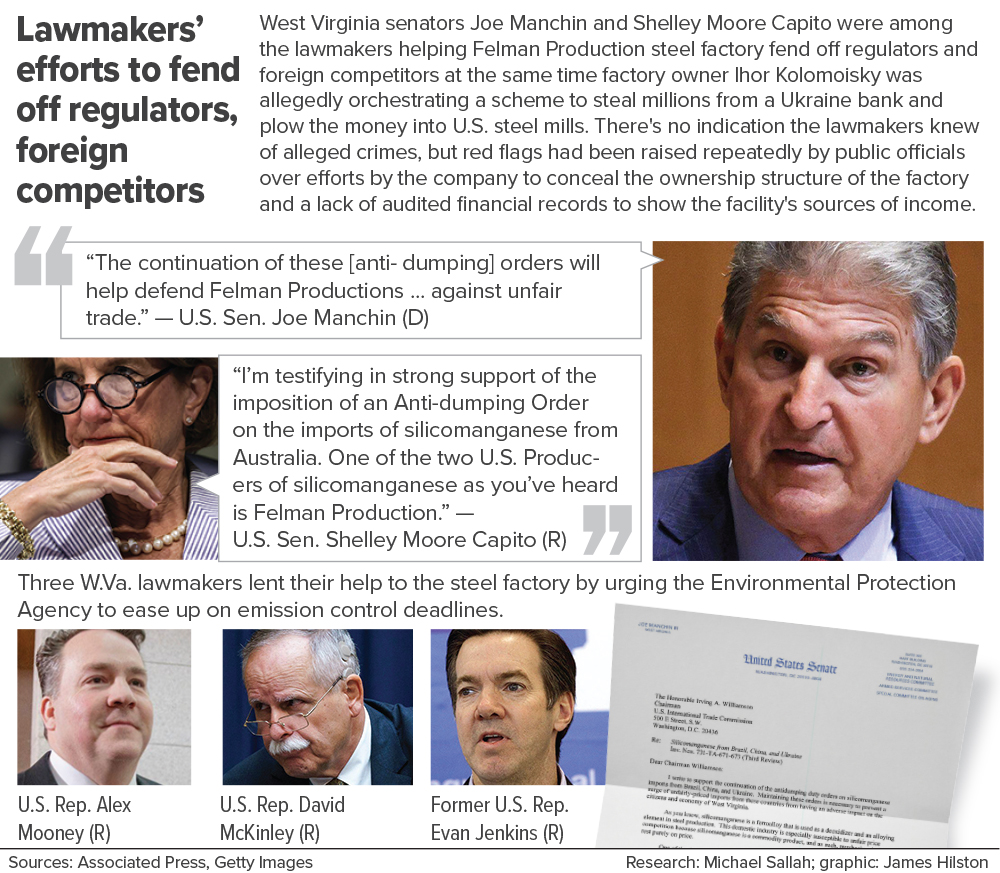

Sens. Joe Manchin and Shelley Moore Capito joined other lawmakers in firing off a letter to the agency in 2015, saying the plant in their home state and another in Ohio could shut down if they were forced to install expensive equipment and submit to testing under a strict deadline.
"It would be extremely disappointing if the companies were forced to stop operating," the letter read.
But as lawmakers were warning the agency the plan was risky for the factory, the owners were amassing a fortune that went far beyond what was told to the EPA.
The owners had been secretly pumping millions of dollars into the plant and other real estate — while fighting federal regulators — in a massive criminal scheme that was carried out across the country, federal prosecutors say.
The factory was the centerpiece of a U.S. steel fortune acquired by oligarch Ihor Kolomoisky, who is accused by prosecutors of stealing hundreds of millions from Ukraine's largest bank between 2008 and 2016 and then plowing the money into steel mills from New York to Texas.
The 58-year-old billionaire, a powerful figure in Ukraine who was banned earlier this year from entering the United States by the State Department, is the focus of a federal investigation that tracked millions of dollars coming into the United States in a flow of money that nearly crippled the bank in Ukraine.

Oligarch Ihor Kolomoisky is accused by federal prosecutors of amassing a real estate empire in the U.S., with millions in stolen funds from Ukraine bank. (Vladyslav Musienko/ Unian / AFP via Getty Images)
The money — at least $225 million — was moved back and forth between the West Virginia factory and other companies owned by Mr. Kolomoisky as part of a larger laundering scheme that helped the oligarch acquire factories and skyscrapers that grew into a real estate empire, prosecutors said.
The allegations against Mr. Kolomoisky and his partners have been raised in federal forfeiture actions and are now being taken up by a federal grand jury, the first investigation of money laundering in the U.S. steel industry, the Pittsburgh Post-Gazette has learned.
There's no indication the elected officials knew at the time the companies were steeped in an alleged laundering conspiracy, and public campaign reports do not show any of the officials received money from the owners.
But the help that key lawmakers lent to Mr. Kolomoisky's companies underscores the lack of scrutiny by elected leaders at a time when warning signs of hazardous work conditions were escalating, and the government was supposed to be on guard against foreign operators investing in industries vital to the nation's security.
"Unbelievable," said Raymond Baker, a financial crimes scholar who has testified several times before Congress on money laundering. "They were going through all sorts of gymnastics not to ask the questions as long as money was coming into the economy."
The case also illustrates just how dangerous workplaces can become when they are used in financial crimes, leading to carelessness and cost-cutting that expose workers to even greater risks.
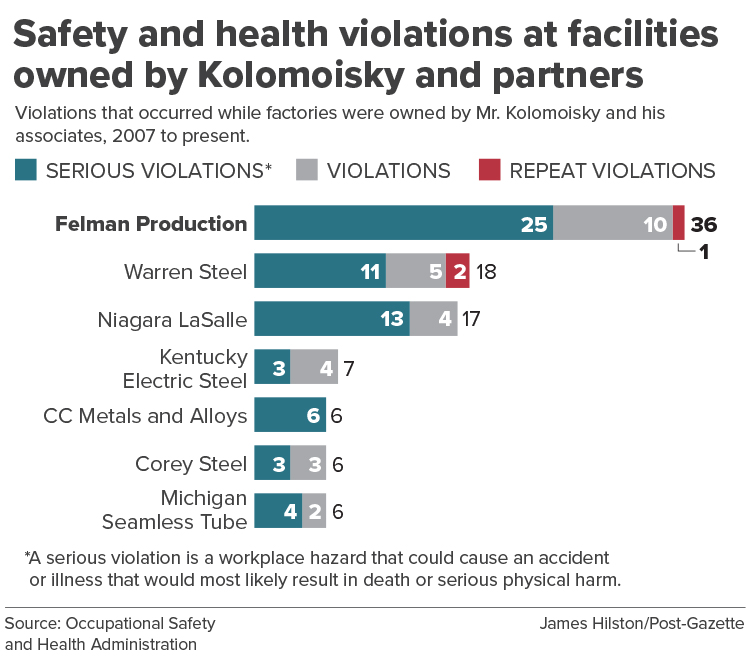
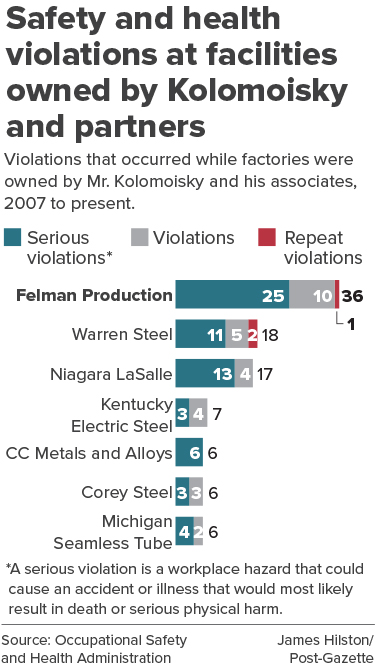
The Post-Gazette published an investigation in April that revealed the broad outline of the operation and the dangers of a troubled mill in Ohio, but the facility in West Virginia was hit with twice as many federal safety violations that put workers at risk of harm or death.
Just two months ago, federal inspectors discovered that a worker suffered serious injuries and was hospitalized after the facility failed to provide fall protection from a ledge 15 feet above the factory floor.
Years earlier, a safety and health employee was thrown across the concrete when dangerous chemicals exploded during a fire, leaving her severely injured and disabled.
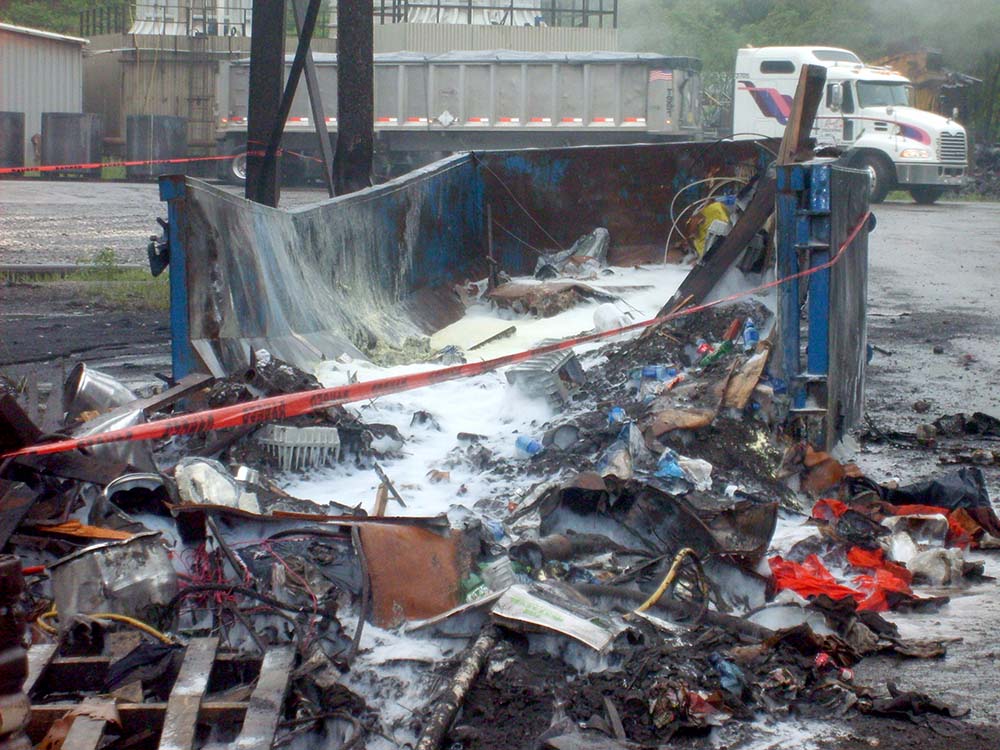
A fire broke out in 2010 in a Dumpster containing dangerous chemicals at Felman. As Paula Cunningham Rickard, a health and safety worker, tried to put out the flames, the chemicals exploded, throwing her across the concrete. She said she now collects disability from her injuries.
In the case of Mr. Henry, who worked on the upper floor of the aging facility, his exposure to smoke and fumes was so intense that he came down with toxic poisoning that forced him to leave his job in 2011, court records state.
"There were so many people injured and hurt," said Richard Richmond, 47, a former plant engineer who plunged 30-feet through a hole in a badly damaged upper floor a decade ago and broke nearly two dozen bones in his body. "It's heartbreaking."
Along the way, the operators gained the help of the elected leaders and spent hundreds of thousands of dollars on Washington, D.C., lobbying firms to fend off regulators and keep operating in one of the most economically distressed areas of West Virginia.
After the letter was sent by Sens. Manchin and Capito, along with Sens. Sherrod Brown and Rob Portman of Ohio and four House members, the EPA eventually dropped part of its plan for Felman to put in a new pollution detection system.
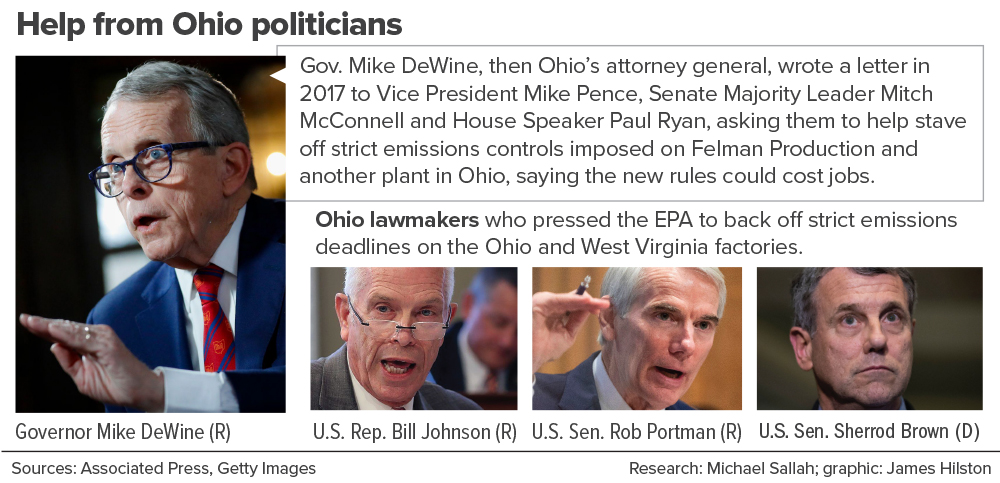
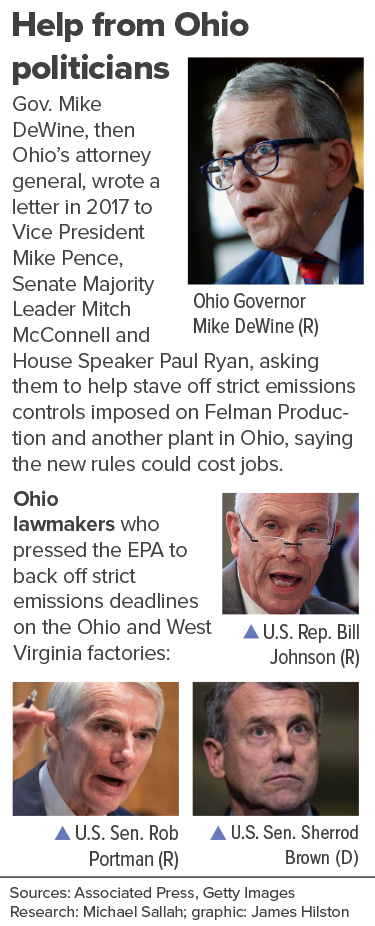
That same year, Mr. Kolomoisky and others spent tens of millions of dollars to buy another steel factory in Illinois, the 13th in their portfolio.
Mr. Kolomoisky, a Ukraine resident who once sent his own armed militia to take over a government oil company, did not respond to repeated interview requests. His criminal defense lawyer, Michael J. Sullivan, did not return messages, but in earlier interviews with reporters, he denied the allegations.
Mr. Manchin, an influential centrist Democrat who has pushed back on President Joe Biden's more progressive environmental plans, did not respond to questions from a Post-Gazette reporter on Tuesday near the Senate Chambers.
An aide accompanying the senator said he would accept questions emailed to the staff. Despite repeated messages, Mr. Manchin's office did not respond to written questions but provided a statement:
"Senator Manchin has always fought to protect West Virginia jobs and worked in a bicameral, bipartisan way to protect the good-paying jobs at the Mason County facility," said Sam Runyon, communications director.
The senior senator, who has been critical of foreign investment in the energy industry, appeared at the opening of Felman Production in 2006 as governor of West Virginia after the oligarch and his partners bought the factory out of bankruptcy for $20 million.
Ms. Capito, now the top Republican on the committee that oversees the EPA, said in a brief interview outside the Senate chambers that she was unaware of any controversy surrounding the factory despite national news stories about Mr. Kolomoisky, his steel plants, and an FBI investigation into his properties.
"I didn't know anything about the ownership [issue]," said Ms. Capito.
Republican Sen. Portman declined to comment, while a spokesperson for Mr. Brown said the Democratic senator joined in the letter to advocate on behalf of the factory in Ohio, which is under different ownership.
Mr. Baker, once a member of a United Nations commission on foreign money laundering, said the lawmakers had a responsibility to know the owners of the facilities when they stepped in to help the two plants.
"You have to be able to identify who you are doing business with. To me, it's elementary when you're writing a letter in support of someone," he said. "I want to know who I'm dealing with. Otherwise, don't write the letter."
Time and again, the operators of the West Virginia factory received help from Sens. Manchin and Capito to help swat away foreign steel competitors while the owners drained the bank in Ukraine in amounts that would later stun regulators in that country.
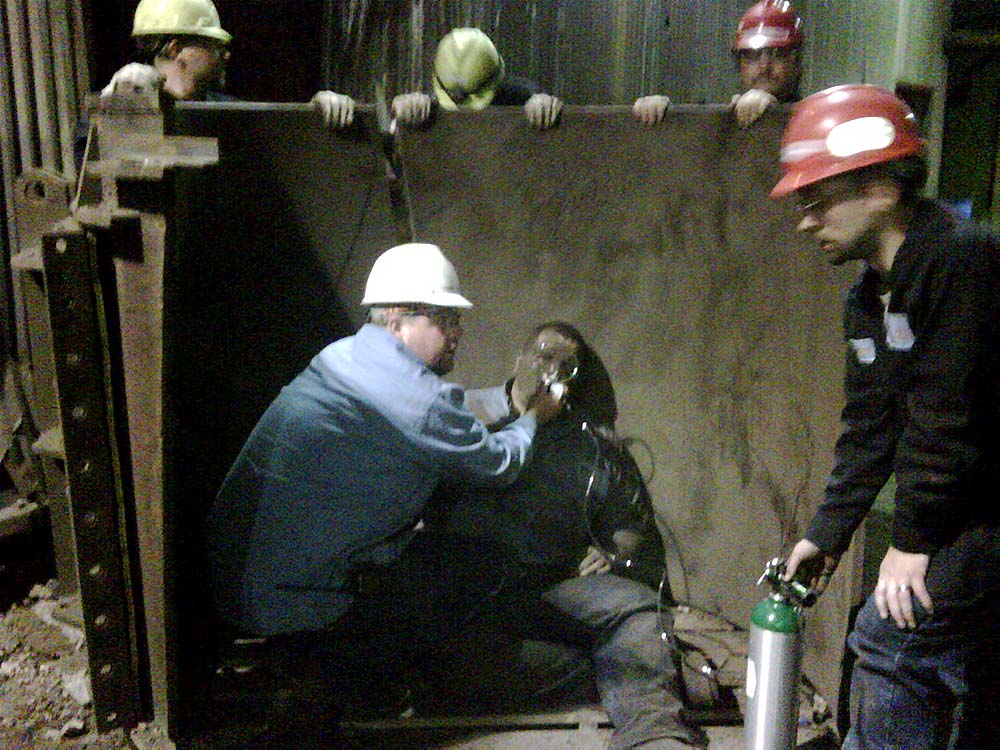
A badly damaged walkway at Felman Production gave way in 2010, sending maintenance engineer Richard Richmond plunging to the floor below, where 22 bones in his body were broken, including his neck, shoulder, ribs, leg and ankle. Federal safety inspectors later found serious violations at the facility.
Warning signs appeared in 2011 when a federal court in West Virginia slapped sanctions on the factory — three times — after a judge found the facility was trying to conceal its ownership structure and ties to Ukraine.
During the legal dispute between the factory and another business, the court found that Mr. Kolomoisky and others were among the top people in control of the facility, prompting U.S. Judge Robert Chambers to issue a scathing ruling, saying the company showed a lack of transparency and "an utter disregard for its duty of candor to this court."
The fight over the release of the information came as the oligarch was moving the money into the country — sometimes tens of millions a week — with the help of PrivatBank employees who were loyal to Mr. Kolomoisky and fellow oligarch Gennadiy Bogolyubov, both major shareholders in the Ukraine bank.
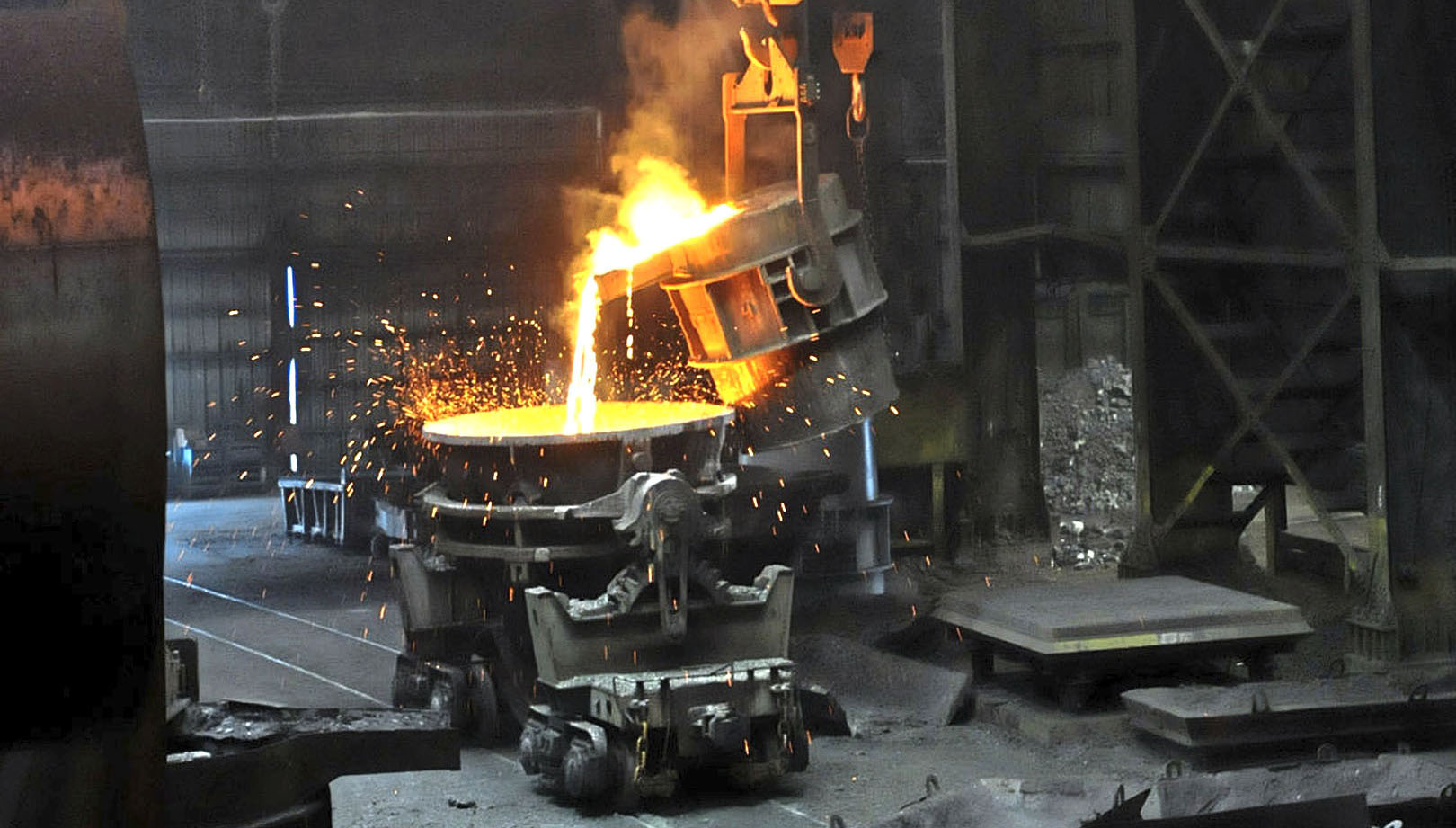
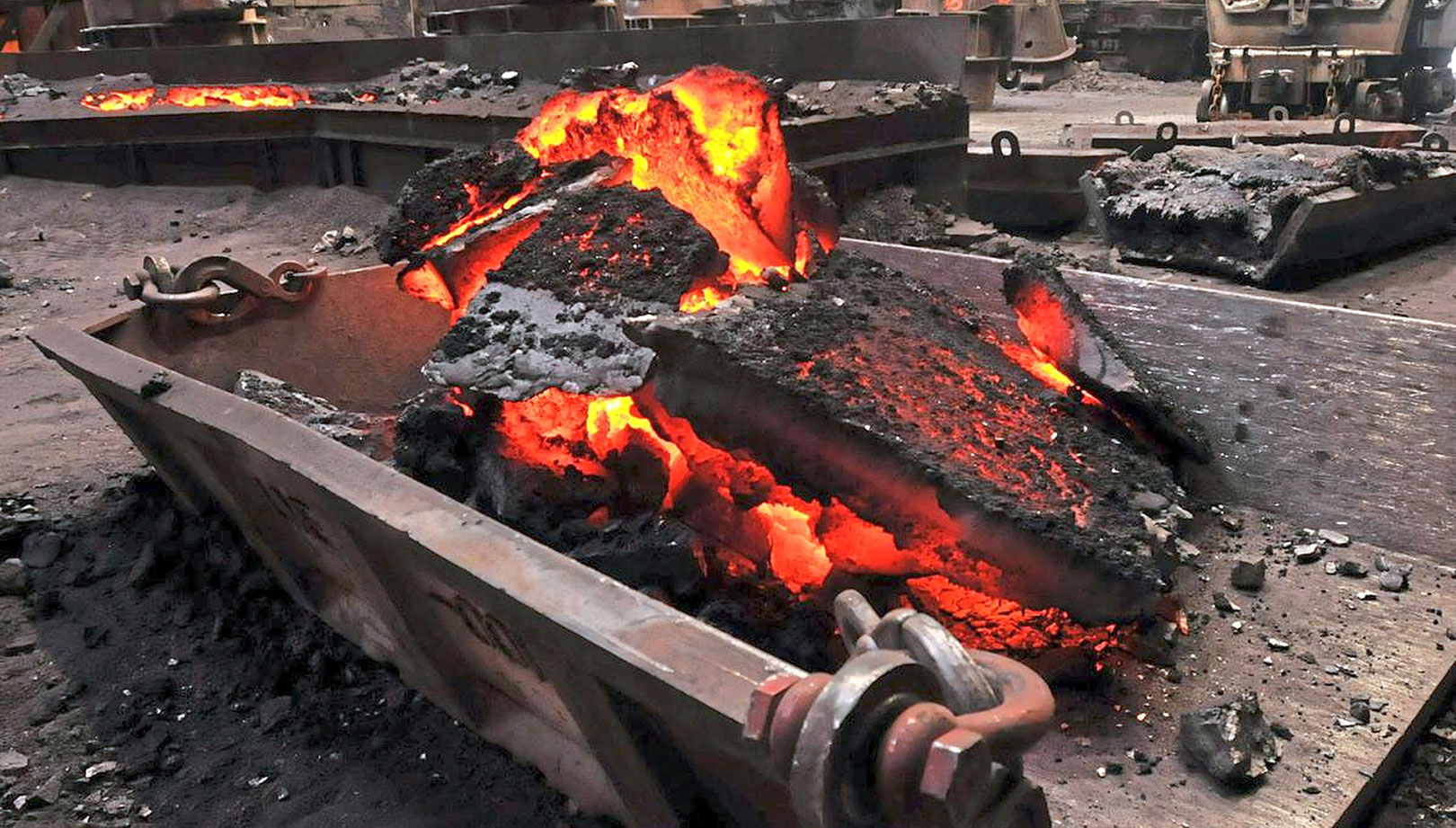
Month after month, the workers inside the bank issued bogus loans to companies under the control of the oligarchs, the money moved through a labyrinth of bank accounts to make it more difficult to track, according to an audit by Kroll Inc., the global security firm hired by the Ukrainian government.
Once the funds arrived in the United States they were poured into real estate, including most of the steel factories, two office parks in Dallas, a sprawling manufacturing center in Illinois and four office towers in Cleveland, including a 31-story high rise with gleaming skylights and a sweeping view of the city.
In less than a decade, at least $750 million was moved into the country from Ukraine — all through Deutsche Bank, the global lender that has paid millions in fines to U.S. regulators in recent years over breakdowns in anti-money laundering.
"It's extraordinary the amount of money that was flooding the U.S. markets," said Lakshmi Kumar, policy director at Global Financial Integrity, a Washington, D.C., research group that tracks financial crimes.
The top officer of the West Virginia factory, Mordechai "Motti" Korf, a Florida businessman accused by federal prosecutors of participating in the laundering scheme and serving as one of Mr. Kolomoisky's key allies, did not respond to interview requests.
But his lawyer said his client has done nothing wrong. "Mr. Korf never engaged in money laundering of any kind, and he has no knowledge of anyone else doing so," said Marc Kasowitz, a New York attorney who once served as a personal lawyer to former President Trump. "Any allegations against Mr. Korf are false and irresponsible [and] arise from Ukrainian political disputes he has nothing to do with and ultimately will be dismissed."
He said his client "has created hundreds of good-paying union jobs in the Appalachian, Midwestern and Southern United States, including in economically depressed areas." Mr. Bogolyubov, a Ukraine native, did not respond to interview requests.
Mr. Richmond, the engineer who was badly injured in the 30-foot fall at the West Virginia plant, said while the owners were buying the properties, safety breakdowns were taking place in the factory that placed workers in danger.
Smoke and dust from the furnaces were filling the plant from leaky exhaust ducts, leaving 2 to 5 inches of baghouse dust on surfaces — residue that can cause kidney and liver damage from overexposure.
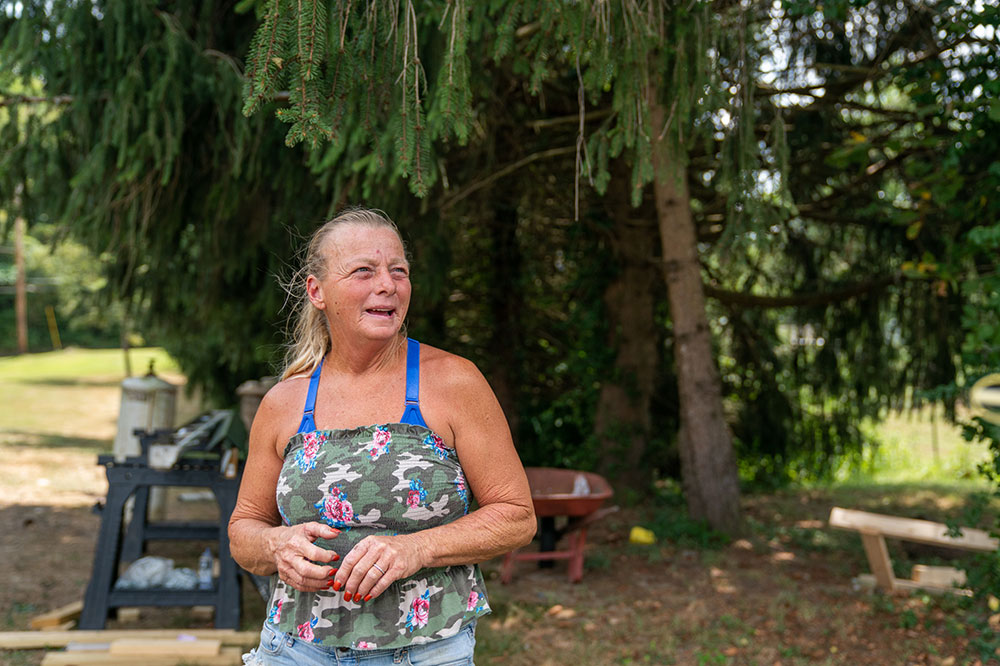
Paula Cunningham Rickard, former safety employee at Felman Production, who was injured in an explosion in 2010. (Andrew Rush/Post-Gazette)
The factory is one of the only producers in the United States of ferroalloys, critical elements that purify and strengthen steel, but create emissions that are laden with lead, manganese and other harmful fumes.
Workers like Mr. Henry began to get sick, he said.
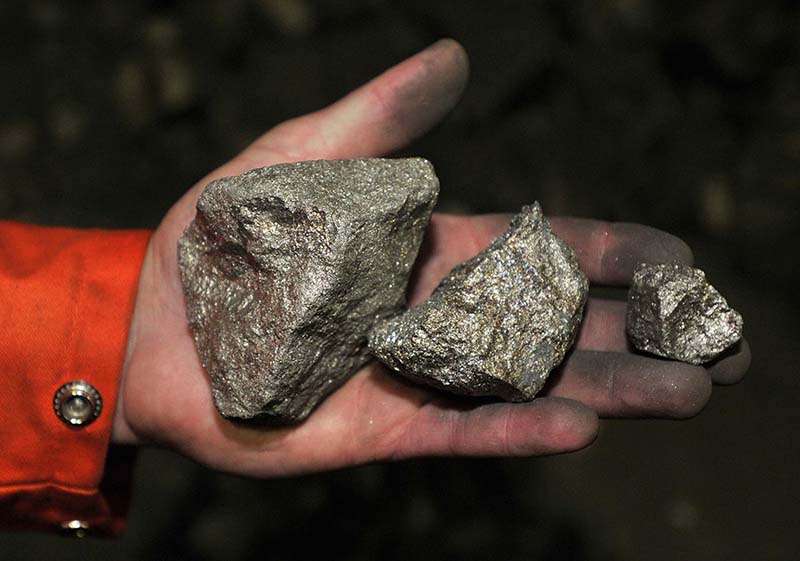
"You couldn't see 10 feet, the dust was that bad," said Mr. Richmond, 47, who left the company in 2013. "I mean, the poor guys on the top floor that were welding the casings, they had a horrible time."
He said he pitched a plan to fix the filtration in the factory, but the operators did not want to make the investment at the time. "We were pulling equipment out of the garbage that has been scrapped" for parts, he said.
Around the same time, the company was spending hundreds of thousands on Washington lobbyists to plead its case to Congress and others over rules proposed by the EPA, records show. In four years ending in 2017, the factory spent at least $335,000 on lobby firms.
While the owners were taking on the regulators, they were gearing up for another battle.
In 2012, Mr. Manchin penned a letter to the U.S. International Trade Commission to ask the agency to continue to press anti-dumping orders on nations like China to protect badly needed jobs at the facility.
Not imposing the penalties "will only further aggravate our economic environment," he wrote.
That same year, Mr. Kolomoisky and his partners had acquired enough office skyscrapers in downtown Cleveland — 2.8 million square feet — to become the largest commercial landlords in the city.

The Cleveland skyline in 2016. Mr. Kolomoisky and his partners became the largest commercial landlords in the city. (Tony Cenicola/The New York Times)
The next year, Ms. Capito went to the trade commission to ask that tariffs be continued on Venezuela and other countries accused of dumping steel to help the factory in West Virginia save jobs, just months after Mr. Kolomoisky and his partners secretly moved $20 million in embezzled money into the United States to buy another steel facility in Kentucky, according to court records filed by prosecutors.
To hide the transfers, the money was moved through 13 different bank accounts of offshore companies in a dizzying series of transactions, prosecutors said.
Months after the Kentucky factory was purchased, red flags were raised once again, this time by state officials who demanded to inspect the financial records of the West Virginia metals plant but were unable to get them.
In order for the factory to get a big reduction in electric costs, it needed to show financial audits, which track the dollars that go in and out of the facility.
Again and again, state officials demanded to see the reports, but Felman Production said it didn't have them.
"The fact that a company with sales exceeding one hundred million dollars does not perform an annual audit is telling," wrote the consumer affairs division of the West Virginia public services commission.
Ultimately, the state officials demanded the factory be rejected.
But after testimony from the Mason County commission president and others who said the jobs were critical — the jobless rate was nearly 10 percent — the public services commission approved up to $90 million in discounts over the next decade.
While the plant was pumping money into the local economy, the facility was drawing the attention of federal safety inspectors, who had repeatedly cited the factory for dangerous and decrepit conditions.
On some days, the smoke and fumes rising from the facility would blow into the nearby neighborhood, covering the homes with a layer of industrial grime, said neighbors and three former employees.
"It ate the paint right off. Imagine what it does to your body," said Paula Cunningham Rickard, 57, the safety employee who was injured when a dumpster filled with chemicals caught fire and exploded in 2010.
Two homeowners who live near the facility said they are unable to remove the brown stains from the sides of their homes, even though the fumes have lessened in recent years. "It eats right into the vinyl siding," said Tom Roush, 70, who lives less than a quarter mile away.
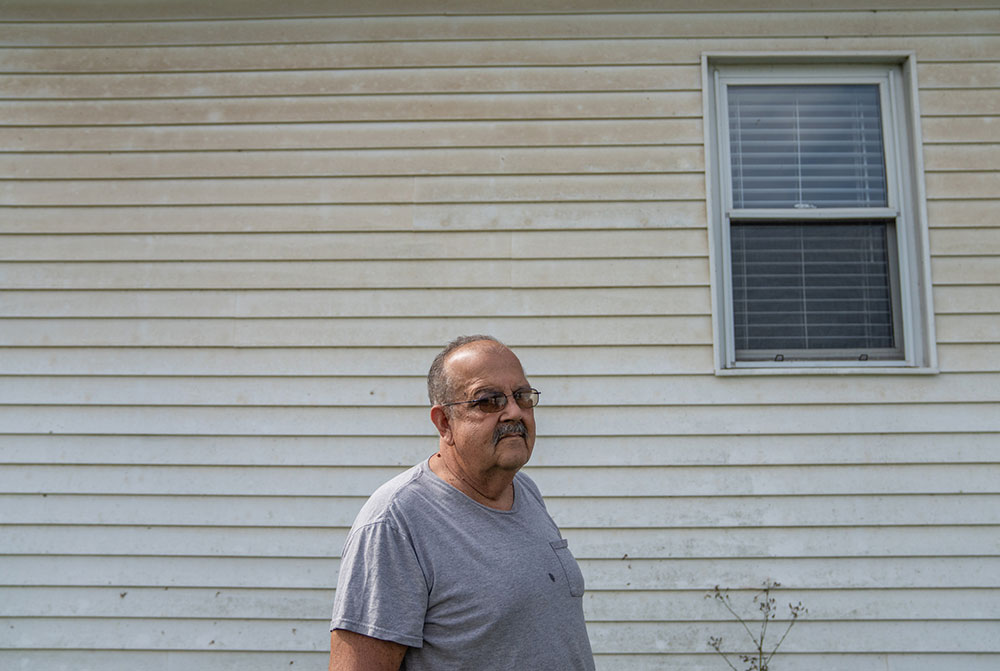
A brown grime covers the siding at Tom Roush's home near Felman Production in Letart, W.Va. He and his neighbors say the emissions from the plant have lessened over the years, but still leave a layer of residue that's difficult to clean. (Andrew Rush/Post-Gazette)
In 2007, the facility was cited by federal safety workers for air contaminants, and five years later, state inspectors said they found "heavy fugitive emissions" coming from the roof, windows and sides of the plant.
In the first decade of operation starting in 2006, federal regulators turned up two dozen serious violations that they said could cause accidents and lead to injuries or death, the most of any of Mr. Kolomoisky's factories.
When the EPA pitched the plan to impose pollution restrictions on the facility and another in Ohio, then Ohio attorney general Mike DeWine jumped into the fray and wrote a letter to three of the most powerful politicians in the country at the time — Vice President Mike Pence, Senate Majority Leader Mitch McConnell and House Speaker Paul Ryan — asking them to help ease the restrictions.
"There is no doubt that protecting the public health from hazardous air pollution is critical, but a proper balance should be struck to prevent job losses, let alone a risk of closure to local businesses," he wrote in 2017.
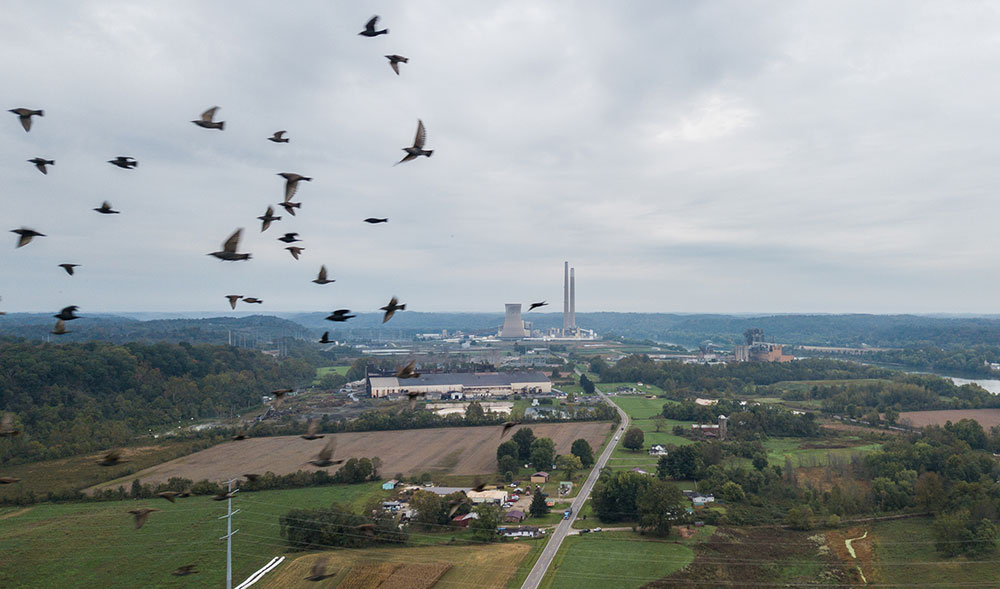
Farmland and small towns dot the area around Felman Production. (Andrew Rush/Post-Gazette)
Dan Tierney, a spokesperson for Mr. DeWine, now Ohio's governor, said Mr. DeWine was mostly focused on the facility in his home state and that the EPA plan appeared to be an overreach by the Obama administration.
"We can be strong on protecting public health and strong on promoting these jobs, which are critical to the U.S. economy," he said.
The next year, federal regulators showed up at the West Virginia facility and found more workers exposed to hazardous levels of fumes and imposed a violation and fine.
About the same time, the factory was sued by the EPA and state over allegations that included failing to have a pollution control system in place for years, leading to an agreement by the factory to make dozens of improvements or face steep penalties.
Mr. Kasowitz, the lawyer for Felman's CEO, said the factory "has made significant investments in worker and environmental safety and will continue to do so." And that the reportable incidents that took place so far this year at the facility are below the industry average.
He said that since the agreement was reached in the lawsuit, Felman has invested more than $2 million in "safety and environmental capital expenditures" and more than $1.6 million in safety and environmental initiatives.
By 2016, Mr. Kolomoisky's money run in the United States began to shift in a new direction when Ukraine regulators turned up evidence that showed the largest bank in the country was in trouble.
Stress tests on the institution by the government showed big money shortages, prompting regulators to take over the bank in late 2016 to avoid a collapse from what they suspected was massive fraud.
After the government looked at the evidence, "we found the fraud was even bigger," former Ukraine finance minister Alex Danyliuk told the Post-Gazette.
A subsequent audit showed $5.5 billion in losses — most of the money in loans doled out to companies owned by the oligarchs and related companies, auditors said.

Mr. Kolomoisky and associates transferred money from Ukraine and Cyprus into the United States through Deutsche Bank USA in New York. (Jeenah Moon/The New York Times)
To make up for the losses, the country was forced to turn to taxpayers or otherwise, "the consequences would have been terrible," he said, adding that it would have led to a national recession. "It's like trying to stop a train coming at full speed."
As Mr. Kolomoisky and others were under investigation in Ukraine, their empire in the United States began to collapse. They stopped paying their bills on many of their U.S. properties.
Four of the steel companies filed for bankruptcy in 2016, owing millions to suppliers. The massive manufacturing center in Illinois was left empty and shuttered, the electricity shut off because the bill wasn't paid.
The breakdowns — vacant buildings, unpaid taxes, jobless workers — are the result of an operation driven by people who wanted to take control of properties and clean cash, not to run normal businesses, said Mr. Baker, the financial crimes scholar and former fellow at the Center for International Policy in Washington.
"They are not in business to make a profit," he said. The goal was to buy properties to "plow revenues and hide those revenues" and ultimately, "run the business in the ground in the process."
Of the 22 properties once owned by Mr. Kolomoisky and his partners in the U.S., the West Virginia facility is one of the few still operating, records show.

Felman Production near Letart, W.Va., in Mason County. (Andrew Rush/Post-Gazette)
While U.S. prosecutors press to seize some of the real estate, experts say a larger question surrounds the role of the elected leaders who helped protect the oligarch's factory in West Virginia.
There is a balance "between going to bat for your constituents and failing to do your own due diligence," said Mr. Baker, who founded Global Financial Integrity in 2006.
Mr. Baker said that there were enough warnings about the facility — including the sanctions imposed by the federal court in West Virginia — that should have been scrutinized by elected leaders before lending their help. "None of this is rocket science. It comes down to political will," he said.
Dennis Dycus, a former state auditor for Tennessee, said the elected officials who helped the West Virginia facility had a responsibility to balance the need for jobs with supporting the regulations that protect the lives of workers.
The level of scrutiny paid to the operation, he said, was "pathetic. They never performed due diligence."
The ability of Ukraine oligarchs to purchase 13 steel factories — an industry considered crucial to national defense — raises questions about the performance of the Committee on Foreign Investment in the United States, a federal panel empowered to screen such deals, said experts.
But elected officials could have also played a much stronger role in questioning the ownership of the facility before agreeing to help, said Edward Martin, a former special agent for the U.S. Treasury.
Mr. Martin, now a trial consultant, said he does not believe most of the public officials took the time to ask the most fundamental questions. "That's not what they do," he said. "They are looking for votes. They are not considering what's going on." But in the end, there were consequences for helping the factory. "They created a fertile environment" for the scheme to continue.
Ms. Kumar, who co-authored a recent study on illicit money in real estate, said the help that was given to the factory — including the special electric cuts — shows the fragile position of a community when it needs the jobs.
"It's sad. There were questions asked, but when you're desperate, you're willing to take any lifeboat," said Ms. Kumar.
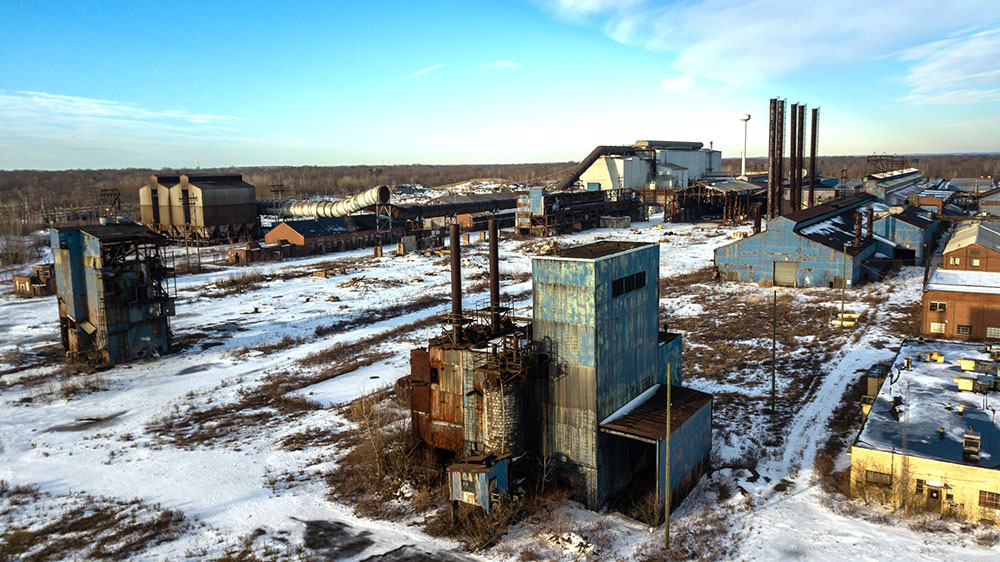
Mr. Kolomoisky and his partners shut down Warren Steel in Warren, Ohio, in 2016, leaving 162 people out of jobs, mounds of hazardous waste and untreated wastewater flowing into the nearby Mahoning River. (Andrew Rush/Post-Gazette)
Although the federal government has set up targeting zones in places like New York and Miami to look for money laundering in property purchases, the orders do not extend all over the country and do not include commercial transactions.
With the help of lawmakers, the oligarch and the others were able to operate freely, she said.
"They know no one is going to be looking. They know it will not receive national attention. A lot of these places are desperate for capital at this point," she said. "It's equally important to talk about the human cost. What are those costs in human lives?"
Post-Gazette Washington bureau chief Ashley Murray and Tanya Kozyreva, reporting from Ukraine, contributed to this report.
Michael Sallah: msallah@post-gazette.com
Ashley Murray: amurray@post-gazette.com
